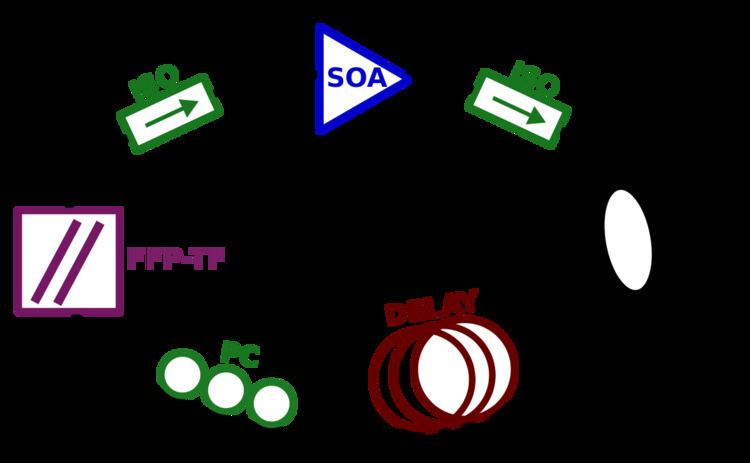 | ||
Fourier domain mode locking (FDML) is a laser modelocking technique that creates a continuous wave, wavelength-swept light output.
A Fourier domain mode locked laser consists of a ring cavity of length
with the group speed of light
A basic FDML laser configuration - as shown in the figure - consists of a:
A main application for FDML lasers is optical coherence tomography.
Essentially, the swept light of an FDML lasers can be viewed analogous to a strongly chirped mode-locked laser pulse. Hence, it was also studied how the swept light field of an FDML laser can be compressed to generate short pulses of 60 picoseconds duration. Furthermore, the work suggests that FDML lasers could overcome the limitations of conventional pulsed laser operation. Here, the energy of the light field is optically stored in the delay fiber, enabling high energy pulses to be produced directly with a low-power semiconductor laser. Shorter pulses in the femtosecond regime might be possible in the future.
Recently, the fast and spectrally broad wavelength sweeps of FDML lasers were used for stimulated Raman spectroscopy (SRS) and hyperspectral microscopy. In SRS, the energy difference between two lasers is used to excite a Raman scattering mode. In this new technique, called Time-Encoded (TICO) Raman, the fast sweeping rate of the FDML laser enables a fast coverage of a broad spectral range of Raman transitions.
